The Solomons is one of those rare destinations for scuba divers that has something to suit everyone’s underwater appetite. Whether that’s colourful coral reefs, large schools of fish, sea caverns or World War Two wrecks, there is something for everyone, as Deborah Dickson-Smith explains.
This tropical archipelago sits on the eastern edge of the so-called Coral Triangle, the global centre of marine biodiversity. This epicentre of marine life spans an area over 6 million square kilometres, taking in Indonesia, Malaysia, the Philippines and Papua New Guinea. 76 per cent of the world’s coral species live here, along with six of the world’s seven turtle species and over 2,228 species of fish.
At the other end of the diving spectrum, reminders of World War Two’s Pacific Battle Arena are never far away, present above and below water, with countless wrecks scattered in the lagoons. The volcanic landscape also provides stunning underwater landscapes, with slots, caverns, caves, even underwater lava tunnels to explore. Here are eight stunning dive sites not to missed exploring in the Solomon Islands.
Did you know?
In 1942, during World War Two, the Solomon Islands were occupied by Japan. There was extensive fighting, especially during the decisive Battle of Guadalcanal. The Japanese were eventually forced from the islands by the Allies in 1945 and British rule was restored.
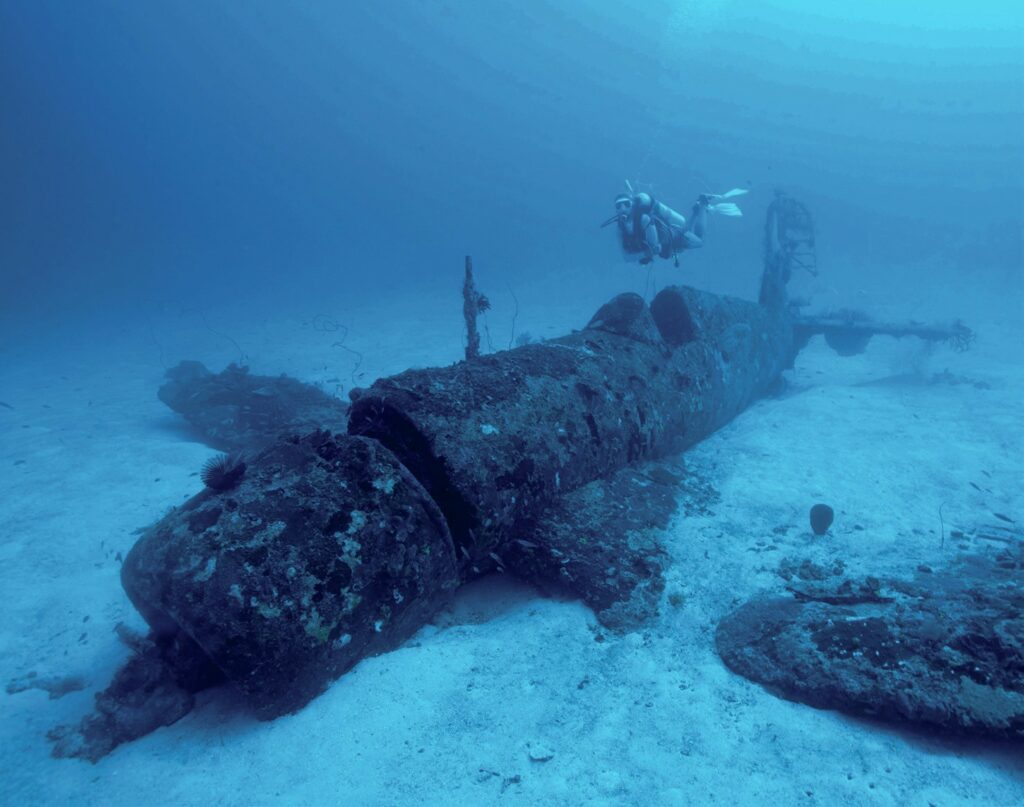
Tulagi Twin Tunnels, Florida Islands
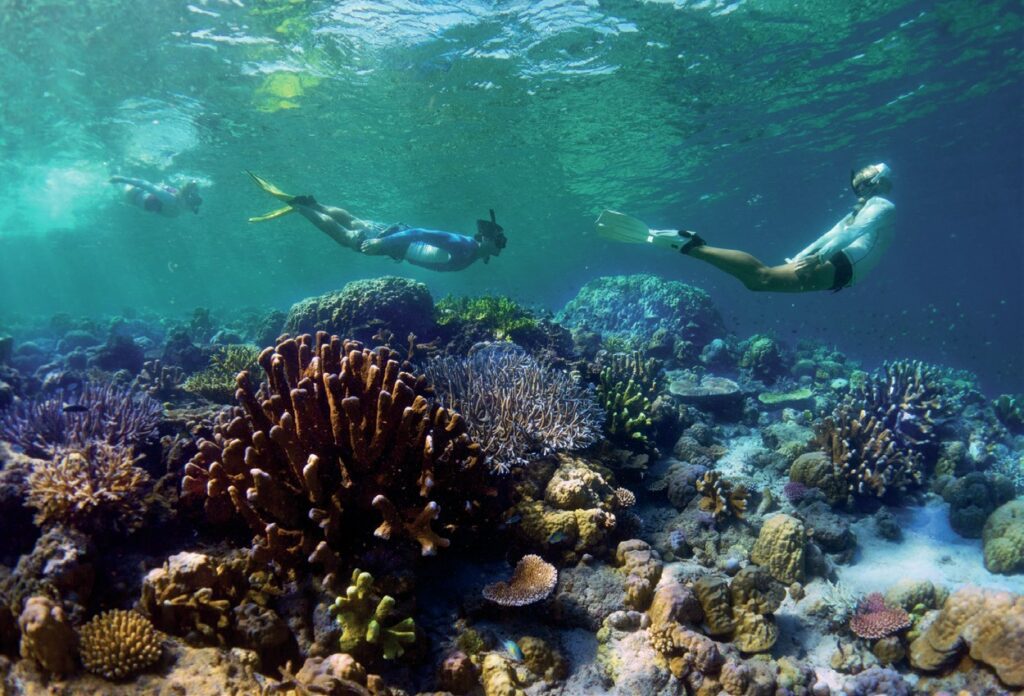
These twin tunnels are, in fact, two ancient lava tubes which drop vertically from the top of a coral seamount at 15m to depths of around 34m. At depth, each tunnel opens up to a cave with a large mouth which opens onto a dramatic wall. Schools of pelagic fish can be found feeding along the wall, and at least eight varieties of anemonefish in hundreds of anemone homes can be found on the top of the plateau.
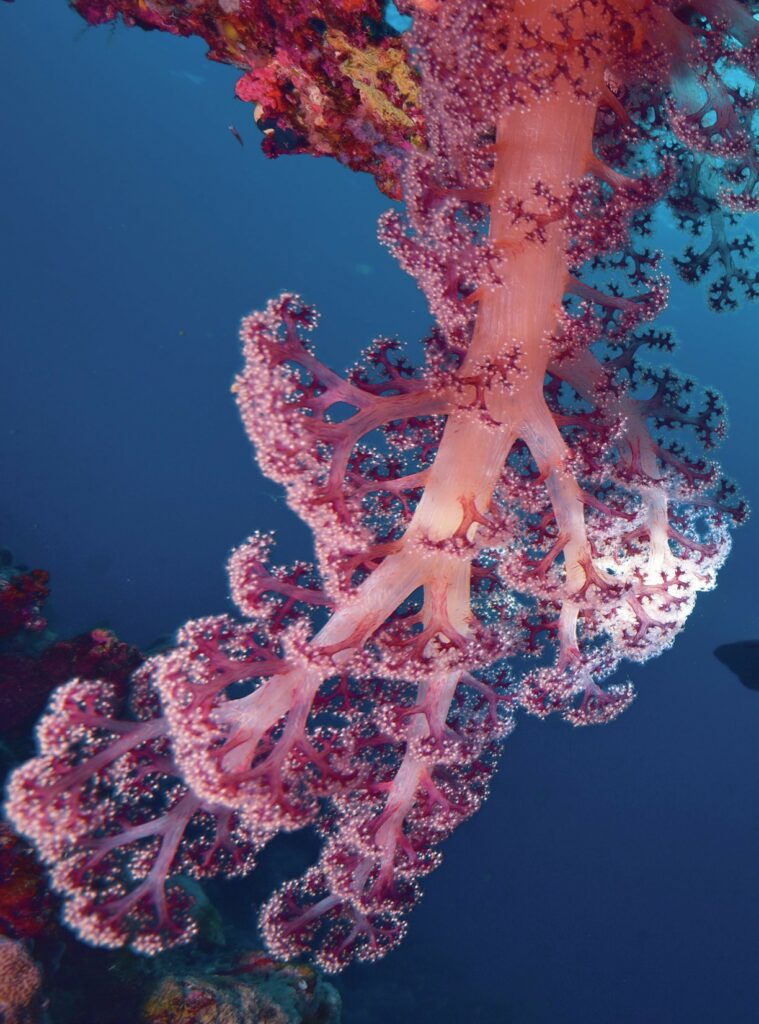
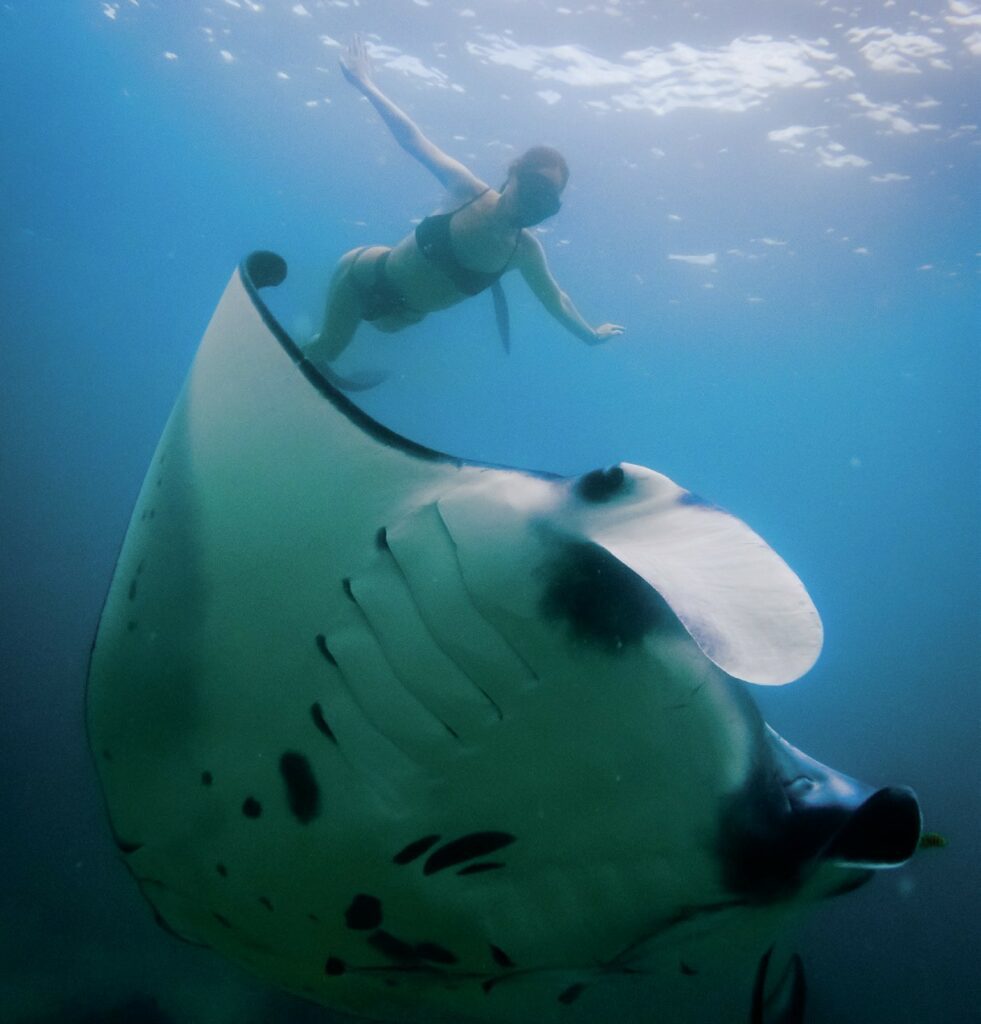
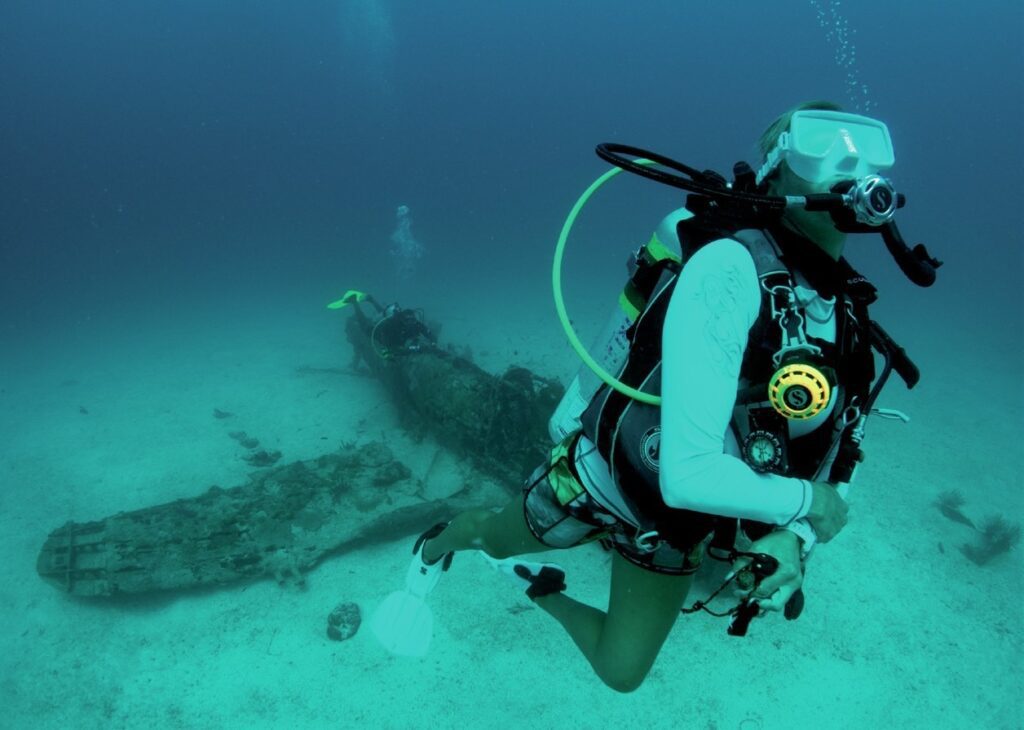
Book your dive trip!
For information on how to book a dive trip to the Solomon Islands, contact the team of experts at Diveplanit Travel. Phone: 1800 607 913 Email: enquire@diveplanit.com Dive shops and groups please contact Jess@diveplanit.com. Diveplanit
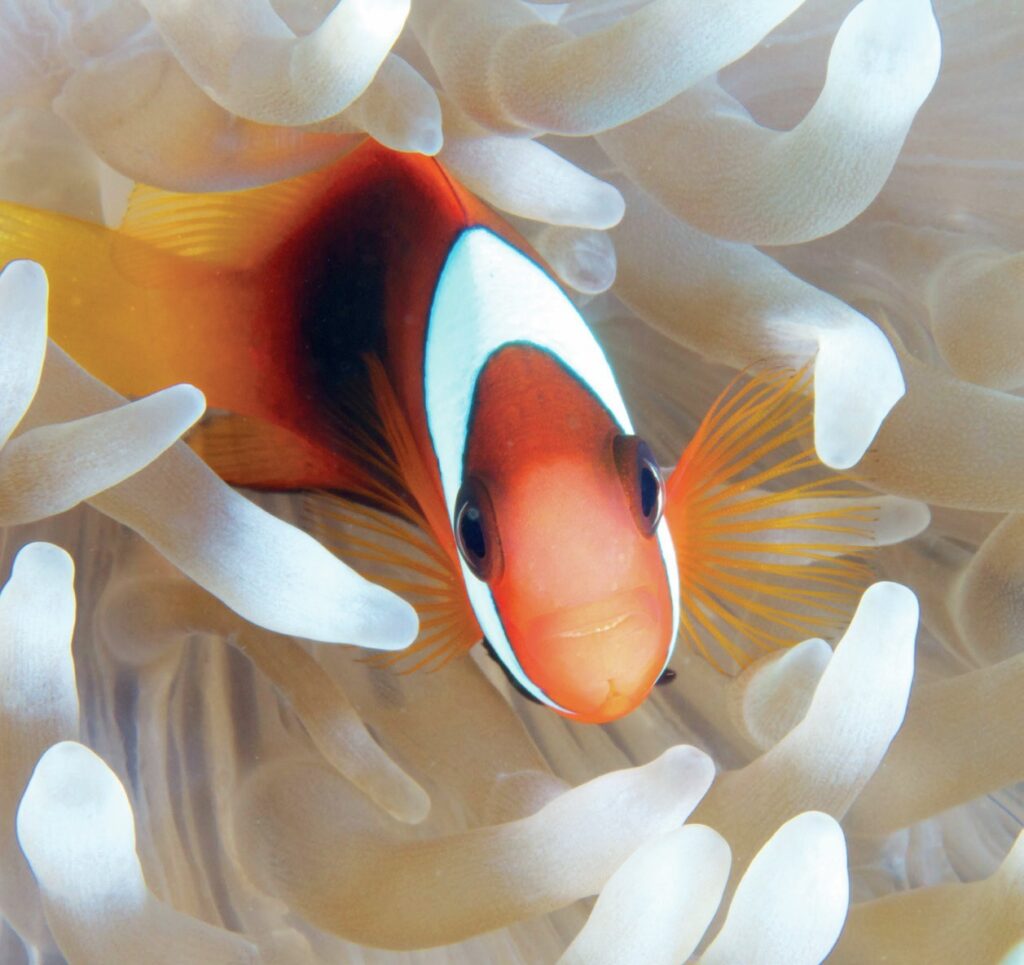
Did you know?
English is the country’s official language but only around 1-2% of the population speaks the language. Around half the population speaks Solomons Pijin and there are at least 120 indigenous languages spoken across the Solomon Islands.
Leru Cut, Russell Islands
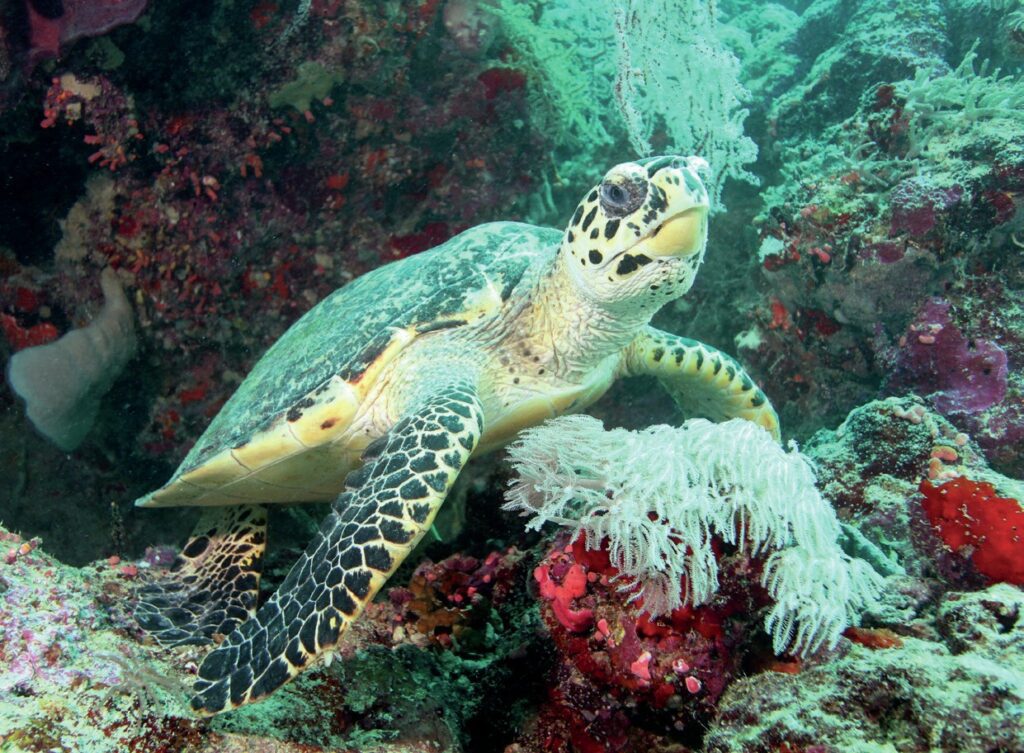
This site is an underwater photographer’s dream. The ‘Cut’ is a long passage cut deep into the land, almost – but not quite – wide enough for a couple of divers to swim side by side. Open to the air at the top, it is lit by slanting shafts of sunlight in parts, and once at the end of the slot, you can surface and look up at vine clad vertical rock walls and listen to the gentle hum of the jungle above.
Cave of the Kastom Shark, Rendova Lagoon
This memorable dive starts in the centre of a small island. After trekking through mangroves, a sinkhole is revealed, roughly 1.5 metres in diameter. Dropping down into this hole, you descend a vertical chimney around 30m and by torchlight, a tunnel is revealed which ascends gradually to an opening in a magnificent coral wall, giant gorgonian fans and bright red whip corals fringe a wide entrance. The vertical wall is teeming with life, with clouds of bright orange and purple basslets flitting around the coral outcrops, while large schools of fusiliers speed up and down the wall. In the blue, sharks swim past, along with the occasional eagle ray and turtle.
Learn to dive in the Solomon Islands
Uepi Island Resort, Dive Gizo and Dive Munda all offer the opportunity to learn how to dive, and further your dive training. You can choose to start the theory element of your course online, minimising your time in the classroom while on holiday, and more time underwater in practical sessions.
Shark Point, Munda
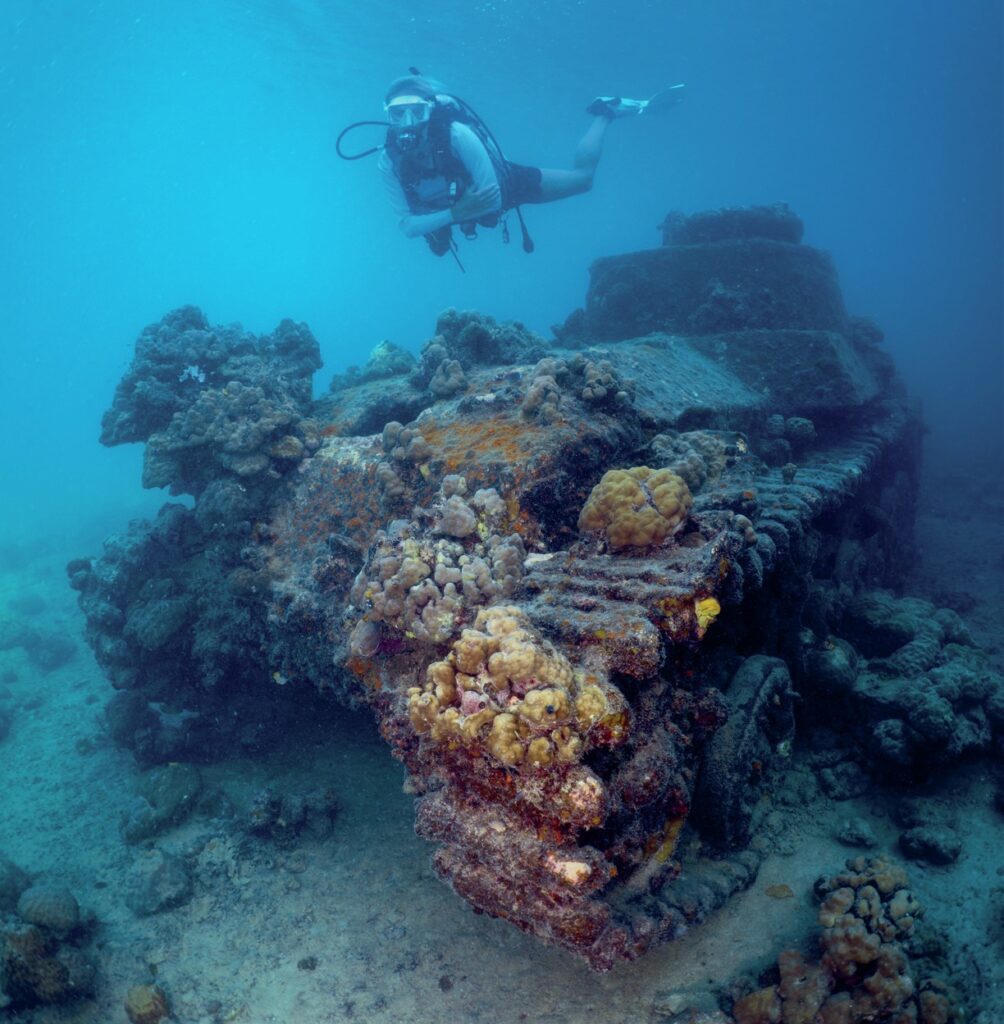
The reef wall at Shark Point is covered in corals of all shapes, sizes, and colours. Brightly coloured soft corals, whips and sea fans make way for hard branching corals and moon-shaped brain corals. Flitting among them are thousands of colourful little reef fish; butterflyfish, damsels, angels, anthias and surgeons, waving anemones with their resident anemonefish on guard. Out in the blue, big schools of snapper, bluefin trevally, barracuda and the odd black-tip reef shark.
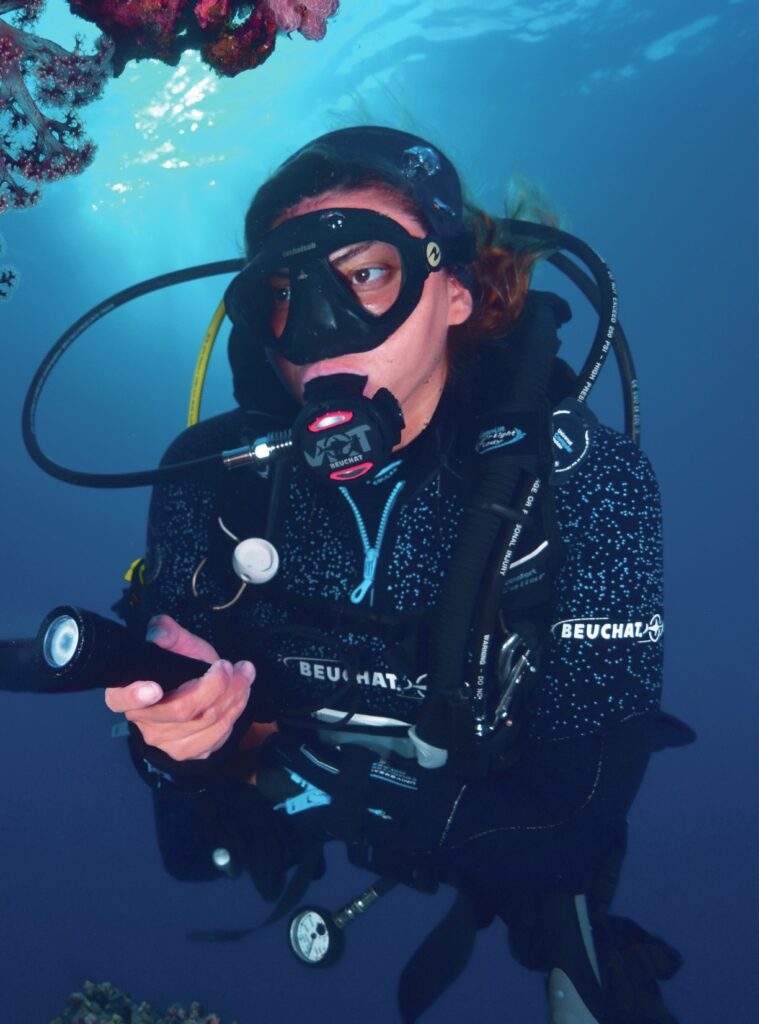
Hapi Reef, Rendova Lagoon
The variety of corals at Hapi Reef, around a 30-minute boat ride from Munda, is only matched by the variety of reef fish. Swim down the reef’s sloping wall to find whip corals, large sea fans and colourful soft bushy corals. You’ll likely come across a few bumphead parrot fish along with huge schools of butterfly fish and damsels.
Bell P-39 Airacobra and Douglas SBD Dauntless, Rendova Lagoon
These two shallow plane wrecks can be dived on a single tank, sitting on a sandy sea floor at a depth of only 9m. Both are reasonably intact and surrounded by large schools of juvenile fish. The body of the planes, once painted in US Airforce drab grey, are now painted in colourful corals which create gorgeous patterns along the length of each plane.
Toa Maru, Gizo
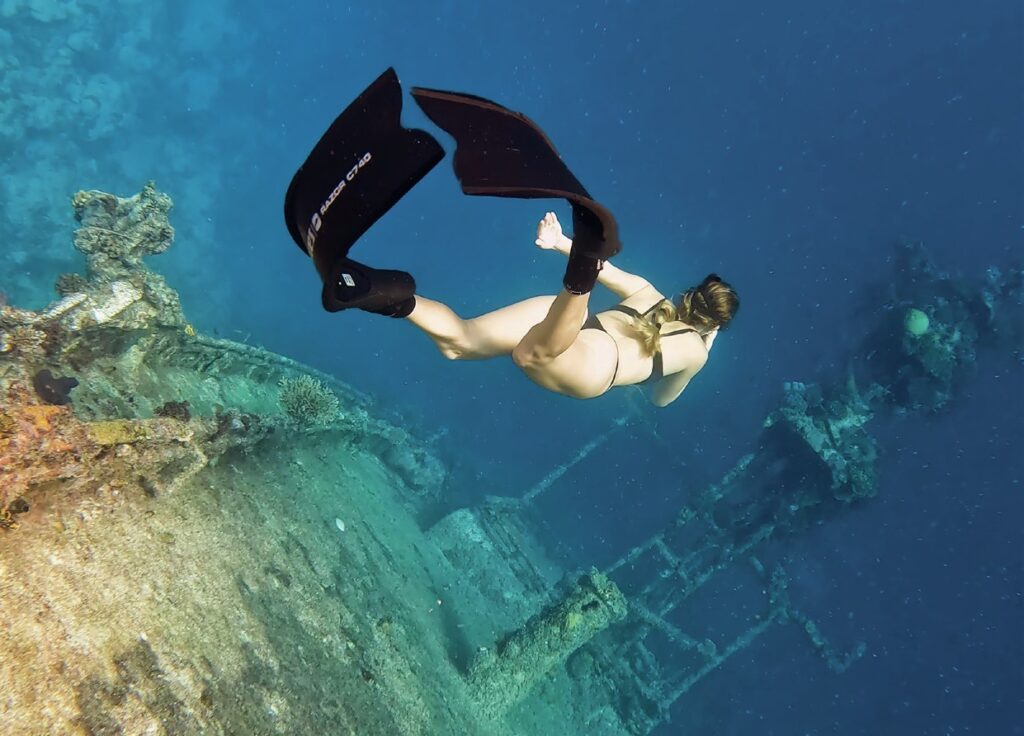
The Toa Maru wreck is an incredible 130 metres long, lying on its starboard side at a depth of 37m. It is the biggest and most-impressive wreck at recreational diving depths in the Solomons. You literally need to swim as far away as 30 metres off the wreck to get a photograph that shows enough of it to get any context of location or size. Every exposed surface has been colonised by coral, in fact this artificial reef rivals your average natural reef for coral cover and marine life.
Uepi Point, Uepi
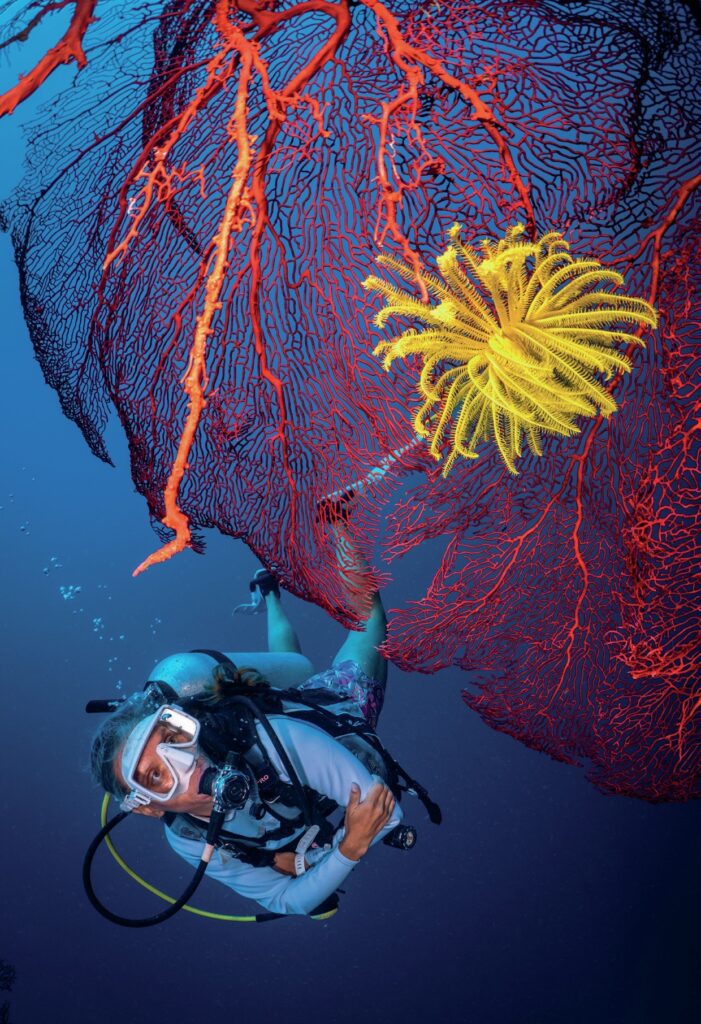
Uepi Point is one of best dives in the Solomons. The oceanfacing side of Uepi Island drops off in a steep wall, with water from the Marovo Lagoon flowing swiftly through the Charapoana Passage.
The currents are not strong but carry nutrients which attract an incredible range of marine life. Though a good dive at any time of day, in the early mornings and late afternoons it can be really going off with large schools of trevally and barracuda, as well as rays and reef sharks.
Photo Credit: Mike Scotland, Klaus Obermeyer, Gerald Rambert, Katie Kelly & Nigel Marsh
This article was originally published in Scuba Diver ANZ #52.
Subscribe digitally and read more great stories like this from anywhere in the world in a mobile-friendly format. Link to the article
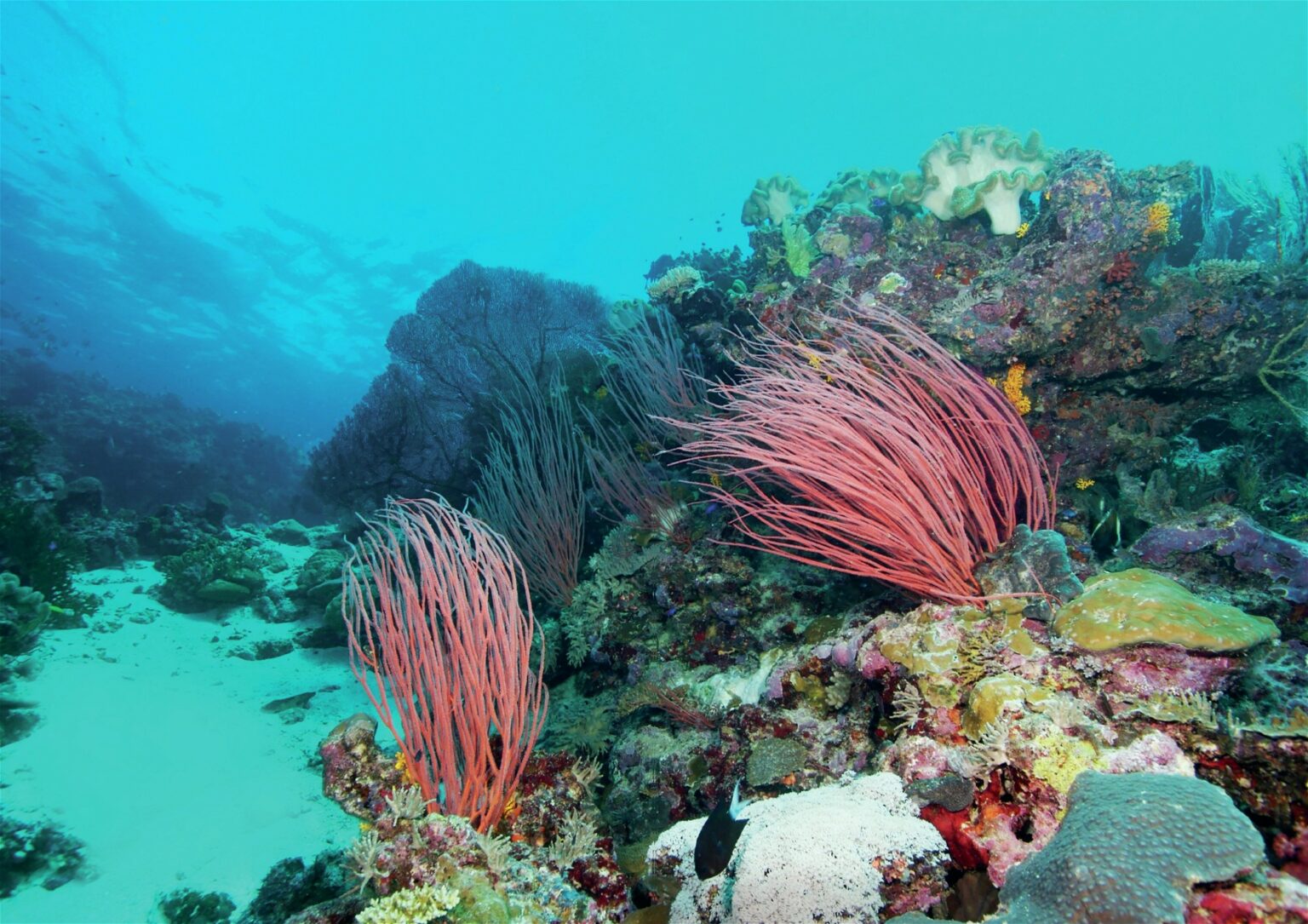


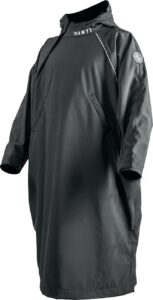
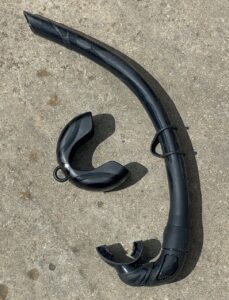
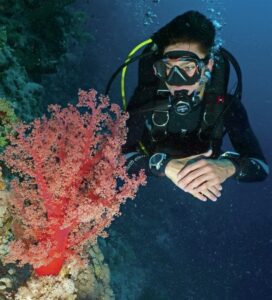
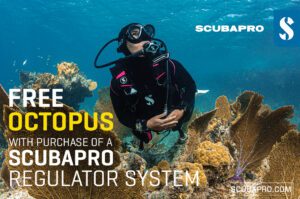
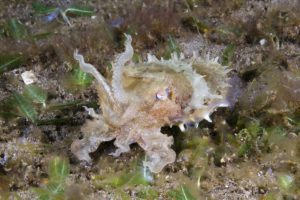
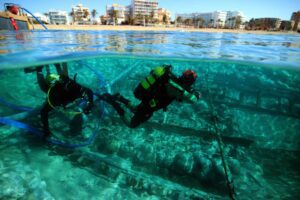
Been rec diving for 15 yrs. Solomon’s too expensive for 99% of scuba divers. I would love to go there and the GBR .